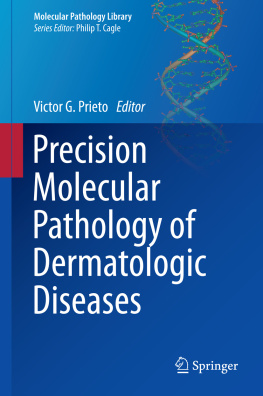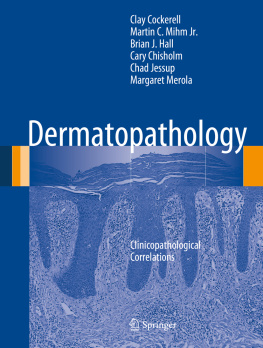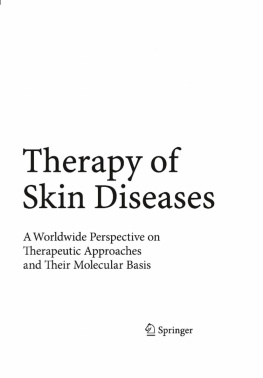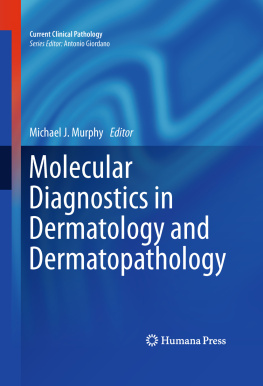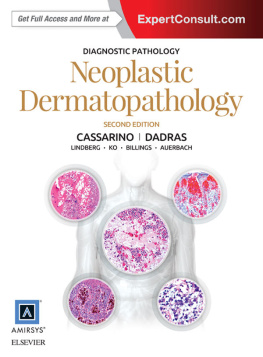1. Introduction
Although special techniques have been applied for more than a century to aid the diagnosis of pathology specimens, it is only within the past 1020 years when the field of ancillary techniques has exploded to the current levels. From the beginning of histology and pathology, morphologists have used a wide range of special techniques such as silver stains to detect the presence of axons, colloidal iron stain to detect mucin deposits in the dermis, or Steiner stain to detect spirochetes. During the 1960 and 1970s, electron microscopy allowed examination of the subcellular structures to detect, among others, the capsids of viruses, organelles associated with a particular neoplasm (Birbeck granules in Langerhans cell histiocytosis), or alteration of the basement membrane area in the different subtypes of epidermolysis bullosa. Since the 1980s immunohistochemistry has become widely used to detect antigens, with applications to neoplastic (e.g., differentiation between Paget disease and melanoma), inflammatory (differentiation among the different subtypes of cutaneous immunobullous diseases), and infectious conditions (detection of spirochetes in cutaneous lesions of syphilis). In a sense, we can consider immunohistochemistry as an early molecular technique since it allows the detection of specific antigens (i.e., molecules).
In the past 1015 years, molecular techniques such as genomic sequencing have become much more available. From an original very expensive price and long-processing times, significant advances have much reduced their turnaround time and cost and thus have made them very attractive to diagnostic applications. The range of genetic or molecular tests that can be performed on skin specimens include polymerase chain reaction (PCR), fluorescence in situ hybridization (FISH), comparative genomic hybridization (CGH), gene arrays, routine cytogenetics, and mass spectrometry.
A very significant advance in the field of molecular techniques has been their progressive adaptation to formalin-fixed, paraffin embedded tissue specimens. As it is well know, due to standard tissue processing (formalin fixation, successive heating periods, and embedding in paraffin), the genetic material is partially degraded so most tests were originally developed on fresh tissue or cell suspensions, thus limiting their practical use in dermatopathology . However, by developing successive modifications, many of these tests can now be utilized on standard, formalin-fixed, paraffin embedded tissue (the material most easily available in pathology departments).
As an example of the importance of these molecular techniques, genomic analysis has allowed to confirm that the old morphologic classification of lentigo maligna, superficial spreading, and acral-lentiginous melanoma correlates with a different genetic signature. Thus, melanomas arising in skin chronically exposed to the sun (i.e., lentigo maligna melanoma) have c-kit and NRAS mutations; melanomas arising in skin intermittently exposed to the sun (i.e., superficial spreading type) typically have BRAF mutations; and melanomas arising in the acral locations or mucosae (i.e., acral-lentiginous mucosal type) most commonly show c-kit mutations. Furthermore, this analysis has not only resulted in better knowledge of the pathogenesis of cutaneous melanoma but has also provided with identification of therapeutic targets in an area surely needed of new treatments.
In summary, this book reviews the most popular and useful techniques, in our opinion, for diagnosis, prognosis, and therapeutic purposes in the field of dermatopathology . Although almost any area of dermatopathology can benefit of the use of molecular techniques, they are currently preferentially used in some conditions, and thus this book devotes one chapter each to cutaneous hematolymphoid, mesenchymal, epithelial, infectious, melanocytic, and miscellaneous lesions. We are aware that it is certainly impossible to discuss all the possible applications of these techniques to the field of dermatopathology; however, we expect that this book will serve as a tool to familiarize the readers with these techniques and help them to add these tools to the diagnostic armamentarium in pathology.
2. Hematolymphoid Proliferations of the Skin
Introduction
Molecular tests used by practicing pathologists are mostly performed on formalin-fixed, paraffin-embedded tissue specimens. Occasionally, when a more comprehensive molecular analysis is required, the use of fresh tissue or cell suspensions can overcome the limitations of testing on fixed tissue. The range of genetic or molecular tests that can be performed on skin specimens with lymphoid or hematopoietic disorders include, but are not limited to polymerase chain reaction (PCR) , fluorescence in situ hybridization (FISH), proteomics, comparative genomic hybridization (CGH), gene arrays, and routine cytogenetics. In this review, we discuss the significance of the molecular testing most frequently used in the evaluation of clinical specimens involved by lymphoid or hematopoietic infiltrates.
Most of the molecular testing performed on cases of lymphoid infiltrates in the skin is done to identify clonality since it is generally thought that the presence of clonality supports a diagnosis of malignancy (i.e., lymphoma) and the lack of clonality excludes malignancy (i.e., reactive lymphoid hyperplasia). This approach is followed because it is considered that skin disorders with lymphoid infiltrates follow the paradigm of lymphoid disorders affecting lymph nodes, where evidence of clonality has usually been equated with malignancy. However, with further clinical specialization, increasing attention has been paid to lesions and tumors arising at extranodal sites, and differences related with specific anatomic sites have been identified, raising the concern that not all criteria applied to nodal lymphomas perfectly fit in extranodal sites. In dermatologic disorders in particular, whereas clinically typical malignant and benign lymphoid lesions exist and can be easily recognized by the clinician, there are many instances in which fully integration of clinical, pathological, and molecular findings is required to reach a definitive diagnosis. Apparent lack of concordance between these findings is a well-known, and probably not uncommon, phenomenon. Clonality may be detected in clinically indolent lesions (a false positive, if following the paradigm of clonality being equivalent to malignancy). Conversely, clinically malignant lesions may lack evidence of clonality by molecular methods (false negative). Moreover, well-established pathological criteria useful for diagnosis of lymph node entities may not be applicable for their skin counterparts, such as the case of follicular lymphoma (FL), associated with t(14;18)(q32;q21) in approximately 85 % of the nodal cases (and usually positive for BCL2 by immunohistochemistry) but commonly negative for BCL2 and harboring the translocation in less than 30 % of primary cutaneous follicle centre lymphoma. The need for correlation of molecular findings with clinical and pathological characteristics of the lesions in dermatopathology cannot be overemphasized.

